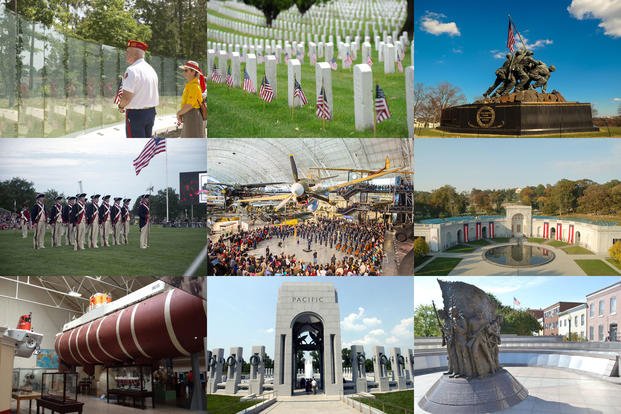From Arlington Cemetery to Civil War sites to numerous monuments in and around the capital, there's no shortage of major military sites to visit when you're in the Washington, D.C., area.
Here's a rundown of nine must-sees, as well as some extra suggestions for places close to town.

1. U.S. Marine Corps War Memorial (aka Iwo Jima Memorial)
The raising of the American flag on Iwo Jima in World War II is one of the most iconic images in military history, and it's been captured permanently in this monument next to Arlington National Cemetery. Modeled on the 1945 Pulitzer Prize-winning photograph by Joe Rosenthal, the U.S. Marine Corps War Memorial is composed of Swedish granite and contains inscriptions of the location and dates of every major battle involving the Marine Corps. The flag at the top of the memorial is at full mast 24/7, 365 days a year, thanks to a proclamation by President John F. Kennedy. Incidentally, The two actual flags raised during the Battle of Iwo Jima are at the National Museum of the Marine Corps in Triangle, Virginia, half an hour south of Washington D.C. The second flag is on display daily at the museum.
Tip: Summer is an especially good time to visit the memorial, as the Marine Corps' Silent Drill Platoon, along with its Drum and Bugle Corps, performs Sunset Parades at the Memorial. Performances are free and open to the public. Visit the Marine Barracks Washington website for updates on performances.

2. Vietnam Veterans Memorial
The Vietnam Veterans Memorial is a sobering, moving tribute to the lives lost during the Vietnam War. The design for the memorial was determined through a nationwide competition. The memorial is based on a design by architect Maya Lin, chosen from a pool of 1,400 submissions. Seventy separate panels make up each of the two walls, which are each 200 feet long and contain more than 58,000 names listed in chronological order. Those with a small diamond next to their names died in action; those with a small cross next to their names were missing in action; and those with a cross that is "filled in" with a circle were MIA but later found.
Tips: The park is open 24 hours a day, but take advantage of the free talks and tours given by Park Rangers and volunteers daily, every hour from around 10 a.m. until 11 p.m. For help finding a name on the walls, use the giant book next to the memorial. If you have a relative who has their name on the wall, you can have a rubbing done of the name to take home.
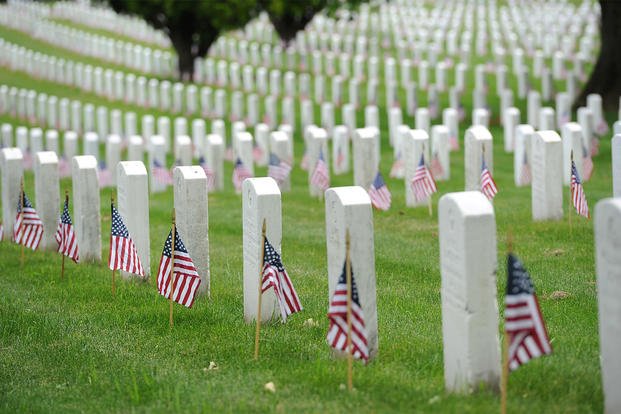
3. Arlington National Cemetery
The final resting place of more than 400,000 men and women, Arlington National Cemetery is one of the most well-known cemeteries in the country. Covering more than 600 acres of land, it includes the graves of John F. Kennedy, William Howard Taft, and a host of other famous persons -- as well as those whose names are unknown but never forgotten, at the Tomb of the Unknowns. Those eligible to be buried at Arlington include active-duty military and retired reservists, recipients of the military's highest honors, and former prisoners of war. If you're looking for a particular person buried on site, visit the ANC Explorer, which photographs and documents every gravesite.
Tip: If you plan to see the cemetery's major sites -- the Kennedy graves, Tomb of the Unknowns, and Arlington House -- make sure to bring your walking shoes (and strollers for younger children), as it takes time to walk between them. Another option is to take tour buses from the Visitors Center to these three sites, which run every 15-30 minutes. If you'd like a more informative visit, sign up with DC Free Tours by Foot, which offers tours (advance reservations required).
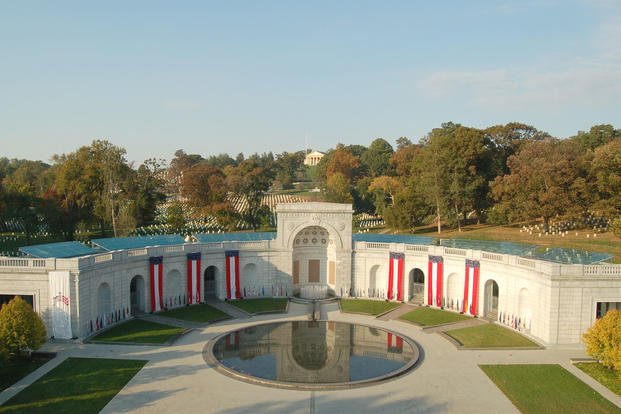
4. Women in Military Service for America Memorial
The Women in Military Service for America Memorial (Women's Memorial), located close to Arlington National Cemetery, is the only major national memorial honoring all women who have defended America throughout its history. Open to the public every day except Christmas, the memorial features an upper terrace with views of Arlington National Cemetery and Washington, D.C., as well as an Education Center, reflecting pool and Court of Valor. The Education Center, located behind the Hemicycle, houses a Hall of Honor, exhibit gallery, theater, and the computer database of servicewomen called the Register. Through the Register, visitors can access photos, military histories and the individual stories of registered women.
Tip: Personal docent tours of the Memorial, which include the Exhibit Gallery, Register Room, Hall of Honor and Upper Terrace, can be scheduled with at least two weeks' lead time. To reserve a tour, call 703-892-2606.

5. Fort Myer
Next to Arlington Cemetery, Fort Myer has been an important post of Army Signal Corps history since the Civil War. It is currently home to the service's chief of staff and the Army's oldest active infantry regiment. It was the site of the first military test flight and contains a host of buildings that date back to the eighteenth century. Fort Myer is listed as a National Historic District and a National Historic Landmark by the U.S. Department of the Interior.
Tip: From May 1 to July 31, Fort Myer's Summerall Field hosts the Twilight Tattoo ceremony, which dates back to before the Revolutionary War, and traditionally involved bugle and drums calling troops back to their barracks from local bars. The U.S. Army Military District of Washington performs the Twilight Tattoo ceremony every Wednesday at 6:30 pm. The event is free. Get to the show early to get a good viewing spot from the bleachers or grass. To check on the Twilight Tattoo schedule, visit the Twilight Tattoo site.
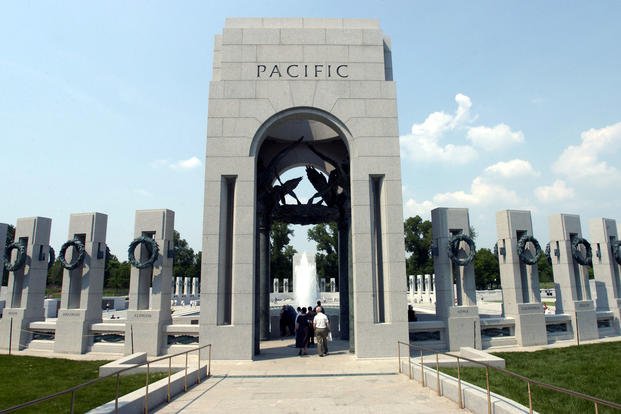
6. National World War II Memorial
Honoring the 16 million U.S. people who served in World War II, the National World War II Memorial sits at the east end of the Lincoln Memorial Reflecting Pool. The memorial is open to the public 24 hours a day. Park rangers are on duty to answer questions from 9:30 a.m. to 10 p.m. daily, and interpretive programs are provided throughout the day and upon request. The memorial's 56 granite columns symbolize unity among the 48 states, seven federal territories and the District of Columbia during the war, with two 43-foot tall arches on opposite sides representing victory in the Atlantic and Pacific. Another highlight of the memorial is the Freedom Wall, which has 4,048 gold stars to symbolize the American lives lost at war (each star represents 100 Americans). In front of the wall, a stone fittingly reads, "Here we mark the price of freedom."
Tip: Next to the Pennsylvania pillar, find the immortal inscription and cartoon "Kilroy was here," probably the most popular meme from the war. The inscription would be scribbled in numerous locations to let all know that American service members had been there.
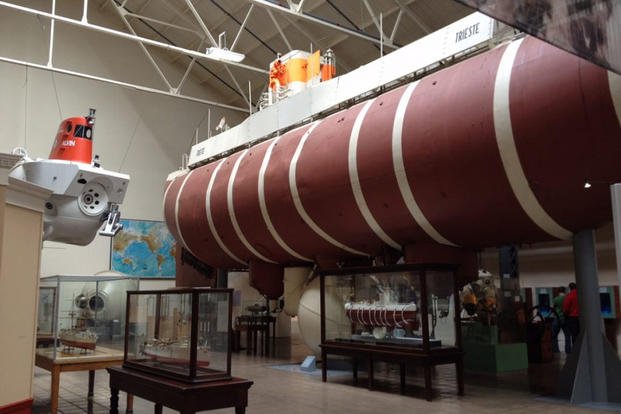
7. National Museum of the United States Navy
Folks may have heard of the Naval Heritage Center, but for a lesser-known but fascinating look at Navy history, visit the National Museum of the United States Navy. The museum is located near the Washington Navy Yard gate at 11th Street and O Street SE. At first glance, it might not look like it's accessible to the public but, rest assured, you can access the museum during regular business hours Monday through Friday, as long as you have a driver's license, a felony-free record and a little bit of patience to get vetted at the Navy Yard Visitor Center. The museum is great for families, as it features numerous hands-on exhibits, including working submarine periscopes and WWII gun mounts, as well as ship models, medals, uniforms, photographs and an art gallery.
Tip: Access to the museum is easier if you have a Department of Defense Common Access Card, or an Active Military, Retired Military, or Military Dependent ID.
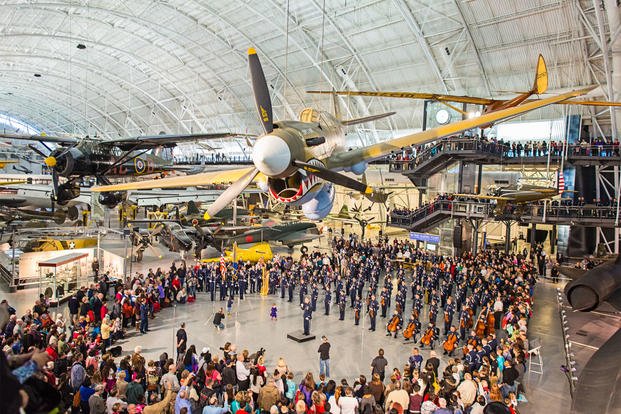
8. National Air and Space Museum
The National Air and Space Museum at the National Mall isn't devoted solely to military aviation, but anyone with an interest in military aircraft and aviation history shouldn't miss it. From the 1909 Wright military flyer to Star Trek's USS Enterprise, there are more than enough exhibits and recaps to keep the military buff satisfied.
Tips: The museum has airport-style security screening, so pack accordingly for your visit to avoid delays. If you want to save time (and some cash), the museum also has a food court. Morning visits are best if you want to avoid the inevitable crowds, and the museum is busiest from late spring through summer, if you want to plan a visit for a less hectic time of year.
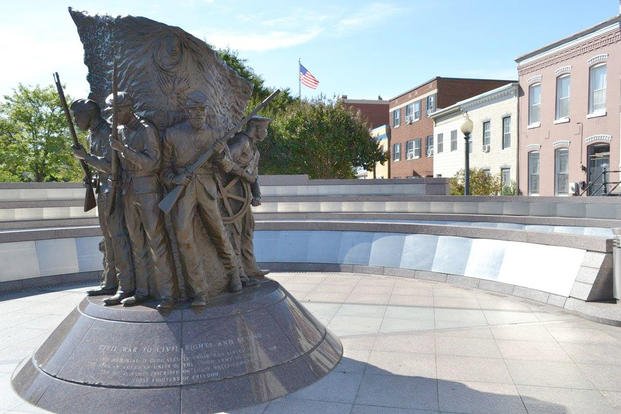
9. African-American Civil War Museum
Honoring the contributions of 209,145 black soldiers during the Civil War, the African-American Civil War Museum currently operates at 1925 Vermont Ave. NW, although it will eventually be moved to the historic Grimke School. The museum features photographs, documents, artifacts, seminars by staff, and historic presentations by volunteer re-enactors, which help visitors understand the role African-American soldiers played in the war.
Tip: Schedule a free tour through the museum website.
Extra Tips:
- If you're visiting D.C., be sure to also take advantage of these 10 military discounts.
- If you're looking for other military points of interest in Washington, D.C., check out Atlas Obscura's list of military history sites, and DC Curbed's map of museums and memorials.
- If you have more time, other important sites within half an hour of the nation's capital worth checking out are Mount Vernon and Manassas National Battlefield Park.
- DC Military Tours is a veteran-owned and operated company that offers guided tours of many of the sites listed above, as well as other local packages. See its website for more details.
Keep up with all military discounts
Whether you're an active duty service member, a military family member, or a veteran, stay on top of all the military discounts you're eligible for, from travel accommodations to auto and entertainment deals. Sign up for a free Military.com membership to get full access to all discounts.
